Day 2 — Monday, Nov. 6
All times are Central Standard Time.
Display Preferences
Hide/Show
7:30 a.m.–8:20 a.m. | Delta Ballroom A | General
AARC Annual Business Meeting
Carl Hinkson, MSc, RRT, RRT-ACCS, RRT-NPS, FAARC, AARC President
Show description

This is the official 2023 Annual Business Meeting of the Association. Reports from AARC leadership are presented. 2024 AARC officers, Board of Directors, and officers for the House of Delegates are installed. The meeting concludes with an address from 2023–2024 AARC President, Carl Hinkson.
Agenda
| I. |
Call to Order
|
Hinkson |
| II. | Approval of 2022 Business Meeting Minutes | Packard |
| III. | Recognition of Outgoing BOD | Hinkson |
| IV. | Treasurer’s Report | Neville |
| V. | Executive Director’s Report | Garrett |
| VI. | ARCF Report | Winders |
| VII. | BOMA Report | MacIntyre |
| VIII. | HOD Report | Jackson |
| IX. | Unfinished Business/New Business | Hinkson |
| X. | Results of 2024 Election | Barrett |
| XI. | Elections Declaration | Hinkson |
| XII. | Installation of 2024 Officers and Directors | Lamb |
| XIII. | Address by 2023-2024 President | Hinkson |
| XIV. | Adjournment | Hinkson |
8:30 a.m.–9:05 a.m. | Canal AB | Adult Acute Care
Mental Health of RTs Performing Terminal Extubating
Michael MacAulay, BS, RRT
Show description


Terminal extubations are not just another task. Over time they are a mentally draining procedure creating memories that last for years. Yes, COVID-19 highlighted the mental health impacts of performing terminal extubations, but truly, frontline staff have not been properly supported for decades. This session will examine how often the mental health of RTs is impacted by terminal extubations, as well as how long these mental health impacts last. Further, this lecture will provide some low-cost strategies to reduce mental health impacts that require only a small-to-medium amount of work to implement.
8:30 a.m.–2:05 p.m.
Symposium
Year in Review
8:30 a.m.–9:05 a.m. | Delta Ballroom B | Adult Acute Care
Endotracheal Intubation—Who Should Perform It and How
Andrew Miller, MSc, RRT, RRT-ACCS, FAARC
Show description
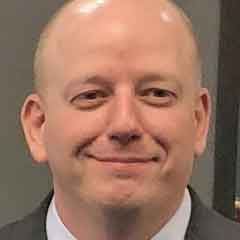
Endotracheal intubation is accomplished in a number of care scenarios, from elective intubation in the OR to emergent intubations in the ED and ICU. Who should perform these intubations and what equipment they should use is a topic of some controversy. This presentation will discuss important publications on this topic in the past calendar year.
9:15 a.m.–9:50 a.m. | Delta Ballroom B | Adult Acute Care
Home Oxygen Therapy
Kimberly Wiles, RRT, CPFT, FAARC
Show description
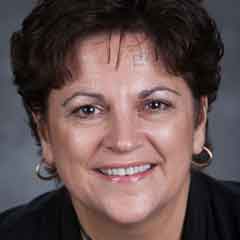
Ambulatory oxygen therapy is provided to more than a million patients in the U.S. at significant costs. Oxygen therapy is predominantly provided by oxygen concentrators. Liquid oxygen is required by a number of patients with high oxygen demands but is increasingly difficult to obtain. This presentation will review research on ambulatory oxygen over the past year.
10:00 a.m.–10:35 a.m. | Delta Ballroom B | Adult Acute Care
High Flow Nasal Cannula for COVID-19
Michael Davis, RRT, PhD, FAARC
Show description
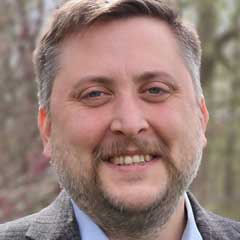
The high flow nasal cannula (HFNC) has become a first-line treatment for hypoxemic respiratory failure. During the COVID-19 pandemic HFNC was initially avoided due to concern for infection risk. Later, HFNC became first-line management to prevent endotracheal intubation. HFNC therapy can be guided by the ROX index and has been shown to reduce intubation when coupled with prone positioning. This paper will discuss the studies in the last year on the use of HFNC in COVID-19.
12:45 p.m.–1:20 p.m. | Delta Ballroom B | Adult Acute Care
Pulse Oximetry
Dean Hess, PhD, RRT, FAARC
Show description
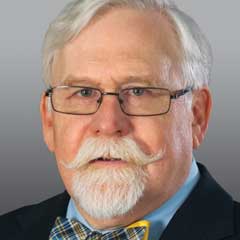
Pulse oximetry is ubiquitous across the health care system. Clinicians rely on SpO2 to monitor therapy, avoid untoward events, and reflect arterial oxygenation. The metrics for describing the accuracy of oximeters can be confusing. The accuracy root mean square is used by the FDA but is not clear to bedside caregivers. Oximeters are not as accurate as clinicians typically believe. Recent evidence has highlighted old knowledge on the impact of skin pigment on accuracy. Similarly, motion and perfusion can alter accuracy. This paper will review publications in the past year that addressed pulse oximetry accuracy and application.
1:30 p.m.–2:05 p.m. | Delta Ballroom B | Neonatal/Pediatrics
Pediatric Tracheostomy
Denise Willis, MSc, RRT, RRT-NPS, AE-C, FAARC
Show description

This presentation will review the literature published in the last year on the role of tracheostomy in pediatric care, including training of personnel, education of family members, and complications.
8:30 a.m.–10:35 a.m.
Symposium
Hospital-Based Education
8:30 a.m.–9:05 a.m. | Washington B | Education
Keys to a Successful Tobacco Cessation Program
Teresa Volsko, MBA, RRT, FAARC
Show description

Tobacco use is a chronic disorder maintained by physical nicotine dependence and learned behaviors. Approximately 70% of people who are addicted to nicotine want to quit smoking; however, the effectiveness and safety of pharmacotherapy and behavioral interventions vary. This lecture will highlight interventions that contribute to cessation and long-term abstinence.
9:15 a.m.–9:50 a.m. | Washington B | Education
Applying Learning Theories: Improve Bedside Clinical Staff Education
Andrew Klein, MS, RRT, RRT-ACCS, FCCP
Show description

Academic educators often apply learning theories as a framework to account for diverse academic needs of their learners. How can learning theories enhance efforts to provide ongoing education for bedside clinical staff? This lecture will discuss different learning theories and how they can be leveraged by the clinical educator to provide more efficient and effective education to practicing respiratory therapists.
10:00 a.m.–10:35 a.m. | Washington B | Education
Scenario-Based Staff Competency Assessments
Sara Murphy, RRT, RRT-NPS, RRT-ACCS, AE-C
Show description
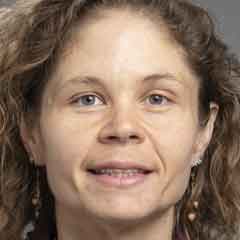

Assessments are essential to the growth and development of staff. To provide quality care to patients, a respiratory care practitioner must have essential skills and critical thinking capabilities. Scenario-based competency assessments achieve this by placing the clinician in real-life scenarios requiring data analysis, problem-solving, evidence-based decision-making, skill demonstration, and development of a care plan.
8:30 a.m.–9:05 a.m. | Delta Ballroom C | Leadership & Management
To be Valued, You Must Bring Value
Theresa Griego, MSRC, RRT
Show description


Being a valued health care team member is important to most respiratory therapists, but what does it take to be valued? What impact does psychological safety, or the lack thereof, have on being valued? During this session, the speaker will discuss how psychological safety can lead to respiratory therapists bringing more value to patient care.
8:30 a.m.–10:35 a.m.
Symposium
Defining and Managing PARDS in 2023: What’s New from PALICC-2?
8:30 a.m.–9:05 a.m. | Delta Ballroom D | Neonatal/Pediatrics
PARDS: Definition, Incidence, and Outcomes
Natalie Napolitano, MPH, RRT, RRT-NPS, FAARC
Show description

The recently concluded 2nd Pediatric Acute Lung Injury Consensus Conference (PALICC-2) consisting of experts from around the globe has built on the initial PALICC definition of pediatric ARDS by further refining the definition, describing the incidence, and, most importantly, assessing changes in outcomes.
9:15 a.m.–9:50 a.m. | Delta Ballroom D | Neonatal/Pediatrics
Optimizing Mechanical Ventilation for Pediatric ARDS
Ira Cheifetz, MD, FAARC
Show description
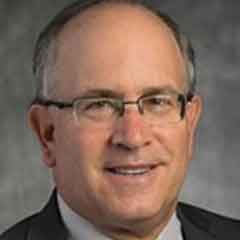
The 2nd Pediatric Acute Lung Injury Consensus Conference offered new insight into the management of PARDS. One of the PALICC-2 experts will discuss the new recommendations, which include thoughts on tidal volume, driving pressure, and mechanical power. Pertinent data supporting the new recommendations will be presented, and adequate time will be provided for discussion with attendees.
10:00 a.m.–10:35 a.m. | Delta Ballroom D | Neonatal/Pediatrics
Pro/Con: ECMO Should be Used Early in the Management of PARDS
PRO: Ira Cheifetz, MD, FAARC
CON: Alex Rotta, MD, FCCM
Show description


ECMO is generally reserved as a rescue modality for those with refractory, severe PARDS. But should this be the case? Would patients be spared from the sequalae of ventilator- induced lung injury if cannulated "earlier" in the management process? Two international experts in the field will debate this important question based on their experience and the pertinent data. Time will be reserved for discussion with the audience. Attend what promises to be an educational and enlightening session.
8:30 a.m.–10:25 a.m. | Bayou AB | General
Open Forum Poster Discussion #5: Respiratory Equipment and Pulmonary Function Testing
Show description
Researchers present the results of their work. Authors briefly present their findings and engage in an open discussion with the attendees.
Supported by an unrestricted educational grant from
8:30 a.m.–10:25 a.m. | Bayou CD | General
Open Forum Poster Discussion #6: Pulmonary Disease
Show description
Researchers present the results of their work. Authors briefly present their findings and engage in an open discussion with the attendees.
Supported by an unrestricted educational grant from
9:15 a.m.–9:50 a.m. | Canal AB | Adult Acute Care
High-Flow Nasal Oxygen Therapy: Beyond Clinical Indications
Oriol Roca, MD, PhD
Show description
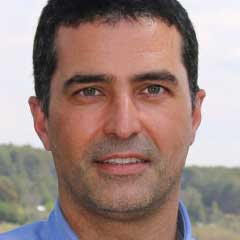
High-flow nasal cannula (HFNC) oxygen therapy has been reported to improve oxygenation and reduce intubation for patients with acute respiratory failure. The clinical indications have been profoundly investigated in the past decade. However, there is no consensus on HFNC flow settings, which may play a key role in the success of HFNC treatment. This lecture will review the physiologic effects of HFNC flow settings for adult and pediatric patients and the current evidence on the optimal flow setting for patients with acute hypoxemic respiratory failure.
9:15 a.m.–9:50 a.m. | Delta Ballroom C | Leadership & Management
Leading Generation Z; One Size Does Not Fit All
Dana Evans, MHA, RRT, RRT-NPS, FACHE, FAARC
Show description

Today’s respiratory care department is made up of four distinctly different generations of therapists. To realize the benefits of a generationally diverse workforce, leaders must understand the needs, preferences and priorities of their team. The presenter will discuss how gen z fits into the department of the future and how to support a multi-generational team.
10:00 a.m.–10:35 a.m. | Canal AB | Adult Acute Care
Oscillatory Ventilation: Is There a Future?
David Kaczka, MD, PhD
Show description
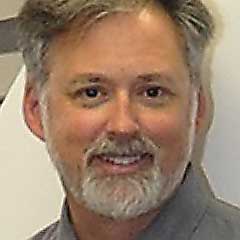
High-frequency oscillatory ventilation (HFOV) was once used as a lung-protective strategy in patients with ARDS. However, clinical trials in adults with ARDS demonstrated that HFOV does not improve survival. Does that mean that HFOV should be abandoned, or should clinicians be rethinking the approach? During this lecture, the speaker will discuss new findings that provide insight into the future of HFOV.
10:00 a.m.–10:35 a.m. | Delta Ballroom C | Leadership & Management
From Being a “Better Ally” to Allyship
Gabrielle Davis, MPH, MA, RRT
Show description

On the heels of multiple world-shifting incidences the past few years and the work being done in the equity and inclusion space, there has been a constant wanting to be a “better ally.” This session will foster understanding in what it means to be truly inclusive while practicing allyship in the health care realm and beyond versus participating in performative allyship.
10:40 a.m.–11:20 a.m. | Delta Ballroom B | General
Adult Acute Care Section Meeting
Maria Madden, RRT, RRT-ACCS
Show description
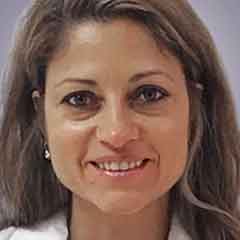
Section members meet to determine their needs and priorities, as well as how to use AARC resources to accomplish them. All Congress attendees, including section nonmembers, are invited to attend and participate.
10:40 a.m.–11:20 a.m. | Washington B | General
Education Section Meeting
Jennifer Anderson, RRT, RRT-ACCS
Show description
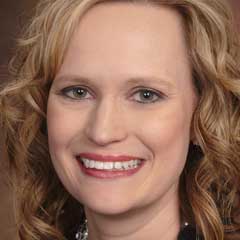
Section members meet to determine their needs and priorities, as well as how to use AARC resources to accomplish them. All Congress attendees, including section nonmembers, are invited to attend and participate.
12:00 p.m.–12:40 p.m. | Canal AB | General
Surface to Air Transport Section Meeting
Jon Inkrott, RRT, RRT-ACCS
Show description
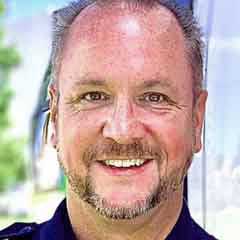
Section members meet to determine their needs and priorities, as well as how to use AARC resources to accomplish them. All Congress attendees, including section nonmembers, are invited to attend and participate.
12:00 p.m.–12:40 p.m. | Delta Ballroom C | General
Leadership & Management Section Meeting
Joel Brown, RRT, RRT-ACCS
Show description

Section members meet to determine their needs and priorities, as well as how to use AARC resources to accomplish them. All Congress attendees, including section nonmembers, are invited to attend and participate.
12:00 p.m.–1:55 p.m. | Bayou AB | General
Open Forum Poster Discussion #7: Management
Show description
Researchers present the results of their work. Authors briefly present their findings and engage in an open discussion with the attendees.
Supported by an unrestricted educational grant from
12:00 p.m.–1:55 p.m. | Bayou CD | General
Open Forum Poster Discussion #8: Neonatal/Pediatrics
Show description
Researchers present the results of their work. Authors briefly present their findings and engage in an open discussion with the attendees.
Supported by an unrestricted educational grant from
12:45 p.m.–1:20 p.m. | Canal AB | Adult Acute Care
Precision Medicine in ARDS
Jeremy Beitler, MD, MPH
Show description

The intent of precision medicine is to tailor care to individual patients to maximize benefits and minimize risks. Is it time to take this approach for patients with ARDS? During this lecture, the speaker will review recommendations and unresolved issues about advancing precision medicine for ARDS and how RTs can help move this forward at the bedside.
12:45 p.m.–1:20 p.m. | Washington B | Education
Update on 2025 CoARC Standards for Entry into Respiratory Care Practice
Thomas Hill, PhD, RRT, RRT-NPS, RPFT, FAARC
Thomas Smalling, PhD, RRT, FAARC
Show description

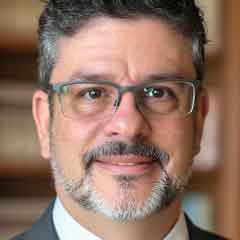
This session will provide an overview of the proposed 2025 accreditation standards and their implications for programs and the profession. Emphasis will be placed on the new differentiated degree framework and the process/timeline for completing the revision.
12:45 p.m.–1:20 p.m. | Delta Ballroom C | Leadership & Management
Respiratory Care’s Role in a Value-Based Care Environment
Teresa Volsko, MBA, RRT, FAARC
Show description

As the health care climate continues to evolve, health care organizations along the care continuum share financial risks and benefits with payors through value-based contracts. Respiratory therapists provide a vital role in this health care journey. This lecture focuses on the tenets of value-based contracts and provides insight on how respiratory therapists make a difference in the way patient care is managed, provide opportunities to improve the health of the populations they serve, and enhance financial benefits for their organization in a value-based-care environment.
12:45 p.m.–
Symposium
Quality of Bag Mask Ventilation in Neonatal Pediatrics
12:45 p.m.–1:20 p.m. | Delta Ballroom D | Neonatal/Pediatrics
Bag Mask Ventilation: The Most Underrated Resuscitation Skill
Akira Nishisaki, MD, MSCE
Show description
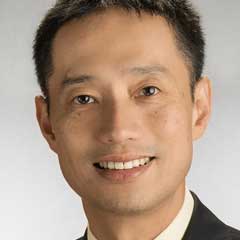
The quality of bag mask ventilation can be difficult for the average clinician to assess with the naked eye, especially in a high stress environment. Given that more arrests are respiratory in nature in neonatal/pediatrics, high quality bag mask ventilation comes with benefits, especially during resuscitation. In addition, high quality bag mask ventilation can reduce adverse events related to tracheal intubation. This lecture will discuss how to provide high quality bag mask ventilation and the impacts it can have on patient safety.
1:30 p.m.–2:05 p.m. | Delta Ballroom D | Neonatal/Pediatrics
Bag Mask Ventilation: Is Raising the Chest Enough?
Natalie Napolitano, MPH, RRT, RRT-NPS, FAARC
Show description

One of the most important markers of the quality of bag mask ventilation is observing adequate chest rise. Though chest rise is one of the quintessential pieces of manual ventilation, it is not the only indicator of high quality bag mask ventilation. This lecture will focus on the criteria that define high quality bag mask ventilation and how to assess whether high quality bag mask ventilation is occurring during manual ventilation in neonatal/pediatrics.
1:30 p.m.–2:05 p.m. | Canal AB | Adult Acute Care
ECMO in ARDS: When and How to Wean
Craig Rackley, MD, FCCP
Show description

Weaning a patient from venovenous ECMO (VV-ECMO) can be challenging, and the optimal method remains unknown. During this lecture, the speaker will review approaches and available evidence that guides successful VV-ECMO liberation.
1:30 p.m.–2:05 p.m. | Washington B | Education
Clinical Precepting: The Key to Elevating the Future of Respiratory Care
Emilee Lamorena, MSc, RRT, RRT-NPS
Show description

Clinical preceptorship is one of the most influential things Respiratory Therapists do to elevate the practice of our profession. In the last few years, there has been a large shift in the RT workforce — many RTs left their departments to travel, retire, or move to different hospitals, and new graduates entered the field for the first time — which has necessitated many departments to invest a lot of time and effort in training new RTs. Precepting effectively can be difficult and draining, which leads to preceptor burnout. This presentation will discuss the importance of precepting in shaping the future of respiratory care, and best practices to do it effectively.
1:30 p.m.–2:05 p.m. | Delta Ballroom C | Leadership & Management
Strategies for Effective Decision-Making
Shawna Strickland, PhD, RRT, FAARC
Show description

Strategic plans are a staple in organizations. Much of the organization’s success depends on the implementation of department-level tactics and the processes used to determine the appropriate path. In this session, the presenter will guide the participants through a conversation about their contribution to achieving the organization’s strategic plan and the tools available to aid in the decision-making process.
2:15 p.m.–3:05 p.m. | Delta Ballroom A | Adult Acute Care
11th Thomas L Petty Memorial Lecture
New Concepts in the Diagnosis and Management of COPD
Carolyn Rochester, MD, FCCP
Show description

COPD is one of the leading causes of morbidity and mortality around the world. COPD is an old disease receiving a new look with modern science and technology. The global burden of COPD has spurred reassessment of the diagnosis, staging of severity, and research into the genetics. The heterogeneity of COPD has implications for patients’ management and updated recommendations for disease management were proposed in the 2023 GOLD guidelines. One such intervention, pulmonary rehabilitation, is highly effective but only a small percentage of people with COPD who may benefit are referred for rehabilitation. Telerehabilitation may provide access to pulmonary rehabilitation to individuals whose access is limited by geography and socioeconomic factors.
3:15 p.m.–5:10 p.m. | Bayou AB | General
Open Forum Poster Walk Rounds #1
Show description
Researchers present the results of their work. Authors briefly present their findings and engage in an open discussion with the attendees.
Supported by an unrestricted educational grant from
3:15 p.m.–5:10 p.m. | Bayou CD | General
Open Forum Poster Walk Rounds #2
Show description
Researchers present the results of their work. Authors briefly present their findings and engage in an open discussion with the attendees.
Supported by an unrestricted educational grant from
3:15 p.m.–5:20 p.m.
Symposium
Controversies in Respiratory Care
3:15 p.m.–3:50 p.m. | Delta Ballroom B | Adult Acute Care
PRO/CON: An Open Lung Approach Should be Used in ARDS
PRO: Neil MacIntyre, MD, FAARC
CON: Thomas Piraino, RRT, FCSRT, FAARC
Show description
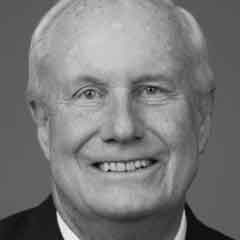

An open lung approach in ARDS is a strategy that involves lung recruitment and subsequent PEEP to reduce ventilator-induced lung injury. The approach is popular, but is it the best way to manage patients with ARDS? Join these two experts as they present data on both sides of the debate.
4:00 p.m.–4:35 p.m. | Delta Ballroom B | Adult Acute Care
PRO/CON: Awake Prone Positioning Should be an Option for ARDS Even After COVID-19
PRO: Jie Li, PhD, RRT, RRT-ACCS
CON: Carolyn La Vita, MHA, RRT
Show description


Awake prone positioning (APP) was used extensively during the COVID-19 pandemic to prevent progression to intubation. While the evidence suggests that APP is helpful in some patients, it is not without challenges. As respiratory therapists move beyond the COVID-19 pandemic, should lessons learned about APP keep it in the ARDS toolbox or leave it in the past?
4:45 p.m.–5:20 p.m. | Delta Ballroom B | Adult Acute Care
Pro/Con: Hyperoxemia/Hyperoxia Should be Strictly Avoided in Adult Critical Care
PRO: Thomas Piraino, RRT, FCSRT, FAARC
CON: Francois Lellouche, MD PhD
Show description

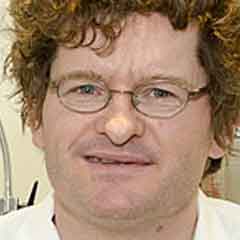
Hyperoxemia/hyperoxia and its harmful effects have long been debated. The current AARC Clinical Practice Guideline suggests no real benefit of excessive oxygen in acutely ill adults and that normoxia should be targeted. However, is there actual harm associated with hyperoxemia/hyperoxia, and should it be strictly avoided? Join these two experts as they present data on both sides of the debate.
3:15 p.m.–5:20 p.m.
Symposium
Engaging Gen Z with Active Learning
3:15 p.m.–3:50 p.m. | Washington B | Education
Pro/Con—Traditional Lectures Need to Go!
PRO: Kristen McHenry, EdD, RRT, RRT-ACCS
CON: Brady Scott, PhD, RRT, FAARC
Show description

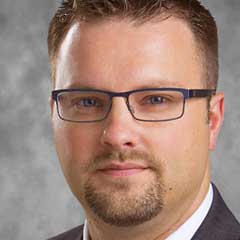
Lectures have a long history of use in higher education, with many educators still using them; however, there is much debate on whether this method is effective. Now in 2023, should we turn the page on lectures and embrace new teaching methods for our students? Join this spirited debate to decide if it is time for traditional lectures to go!
4:00 p.m.–4:35 p.m. | Washington B | Education
Make the Learning Go ’Round: Carousel Case Studies in your Classroom
Camille Stover, MET, RRT
Show description

As the learning needs of our students evolve, instructors continue to search for innovative opportunities to engage students with both the content and one another. Carousel case studies are a cooperative learning strategy that requires students to make cohesive individual decisions toward a group goal. This session will investigate the advantages of team-based learning strategies aimed at building critical thinking ability on an individual level.
4:45 p.m.–5:20 p.m. | Washington B | Education
Virtual Humans Improve Student Experiences with Coaching Smoking Cessation
Daneen Nastars, RRT, RRT-ACCS, CTTS
Show description

Respiratory therapists are well suited to influence a person’s decision to quit smoking or have a successful quit attempt. Respiratory care students are trained to deliver therapies and talk to patients about their chronic diseases but often lack the skills on how to counsel and talk to patients about smoking cessation. This session will describe how a virtual human simulation experience helped students practice and become more confident in talking with patients about smoking cessation in a student-run clinic.
3:15 p.m.–3:50 p.m. | Delta Ballroom C | Leadership & Management
Transitioning to Value in RT: Strategies to Obtain Buy-in
Cheryl Hoerr, RRT, CPFT, FAARC
Show description

While providing respiratory care that demonstrates value should be the goal for every RT department, there are often significant hurdles to face and ongoing opposition from various players who are not supportive of the proposed changes. This presentation will provide you with strategies you can use to emphasize value instead of volume in the provision of your services, and patient experience instead of charges.
3:15 p.m.–3:50 p.m. | Delta Ballroom D | Neonatal/Pediatrics
Optimal Mechanical Ventilation: Computer Directed or Human Managed?
Justin Hotz, BSRT, RRT, RRT-NPS
Show description

Although the concept of closed loop ventilation has been around for quite some time, only recently have software algorithms and input monitoring devices developed to the point that ventilator management can be safely accomplished by a computer. In this session the presenter will explore both sides of this controversy and attempt to answer the question of whether optimal mechanical ventilation is best accomplished by a computer or humans.
3:15 p.m.–3:35 p.m. | Canal AB | Transport
Are You Ready to Roll? Becoming a Transport RT
Jennifer Watts, MSc, RRT, RRT-NPS, C-NPT
Show description
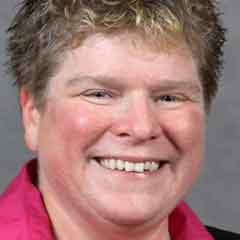
Are you interested in becoming a transport respiratory therapist, but unsure how to get there? During this presentation, the speaker will review the knowledge and experience required to become a successful transport therapist.
4:00 p.m.–4:35 p.m. | Delta Ballroom C | Leadership & Management
Leveraging your EMR and the AARC Safe & Effective Staffing Guide to Optimize Staffing
Lenny Merchant, MBA, RRT, RRT-ACCS, RRT-NPS
Show description
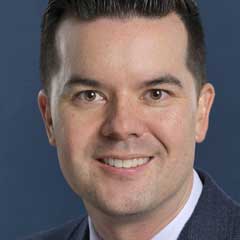

Accurately determining staffing levels to support patient safety and budget efficiency is critical for all RT leaders. The presenter will review how to use your EMR with the AARC Safe & Effective Staffing Guide to develop a staffing model within your EMR that keeps the workflow of the bedside RT in mind. It will also review data and reports that can be extracted for operational utilization.
4:00 p.m.–4:35 p.m. | Delta Ballroom D | Neonatal/Pediatrics
Identification and Management of the Pediatric Difficult/Critical Airway
Akira Nishisaki, MD, MSCE
Show description

Identification of risk factors for anticipated difficulty in placement of an advanced airway are proven to reduce adverse events related to tracheal intubation. Team awareness of airway status is crucial to keep pediatric patients safe within and outside of the intensive care unit. Additionally, once an advanced airway is successfully placed, maintaining that airway must not be overlooked. This lecture will discuss considerations and actions that can be made to optimize intubation outcomes in the pediatric ICU.
4:00 p.m.–4:35 p.m. | Canal AB | Transport
Concepts & Considerations: Interfacility Transport
Jon Inkrott, RRT, RRT-ACCS
Show description

This presentation will highlight the procedures and protocols considered when initiating and caring for the critically ill patient during interfacility transport, including ground and air services. The decision-making process when instituting care, understanding protocols and care considerations specific to each patient population, and defining “definitive care” will also be discussed. Case presentations will show whether it's time to “stay and play” or “load and go”!
4:45 p.m.–5:20 p.m. | Delta Ballroom C | Leadership & Management
A Roadmap to Recruitment
Elizabeth Summitt, MA, RRT, RRT-NPS
Show description


Our profession continues to face challenges in recruitment and retention. Educational programs experience similar challenges with attrition and securing quality clinical experiences. This session will provide practical strategies to improve recruitment, retention, and the student experience through robust affiliate partnerships.
4:45 p.m.–5:20 p.m. | Delta Ballroom D | Neonatal/Pediatrics
Future of the Respiratory Therapist in Cystic Fibrosis Patient Management
Ariel Berlinski, MD
Show description
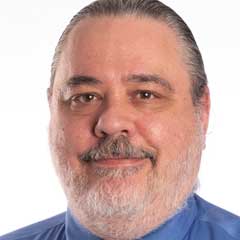
With recent advancements in cystic fibrosis treatment, the landscape of care for pediatric patients with CF is drastically changing. As morbidity declines and life expectancy continues to increase, what once was a devastating disease is showing a bright future. The respiratory therapist has always been a key team member for the CF patient, but as progress in disease management improves patient outcomes, the role of the RT in CF care is changing.
4:45 p.m.–5:20 p.m. | Canal AB | Transport
Medical Emergency at 40,000 feet: Health Professional on the Plane?
Alex Rotta, MD, FCCM
Show description

Medical emergencies in the air take on a whole new meaning when you are at 40,000 feet over the Pacific Ocean with no land for at least four hours. This session will review common medical emergencies that occur in the air, management strategies, limited resources available, and outcomes. Attend for an interesting and potentially scary discussion of the question you never want to hear—“Is there a medical professional onboard?”
There are no sessions that match your display preferences.

